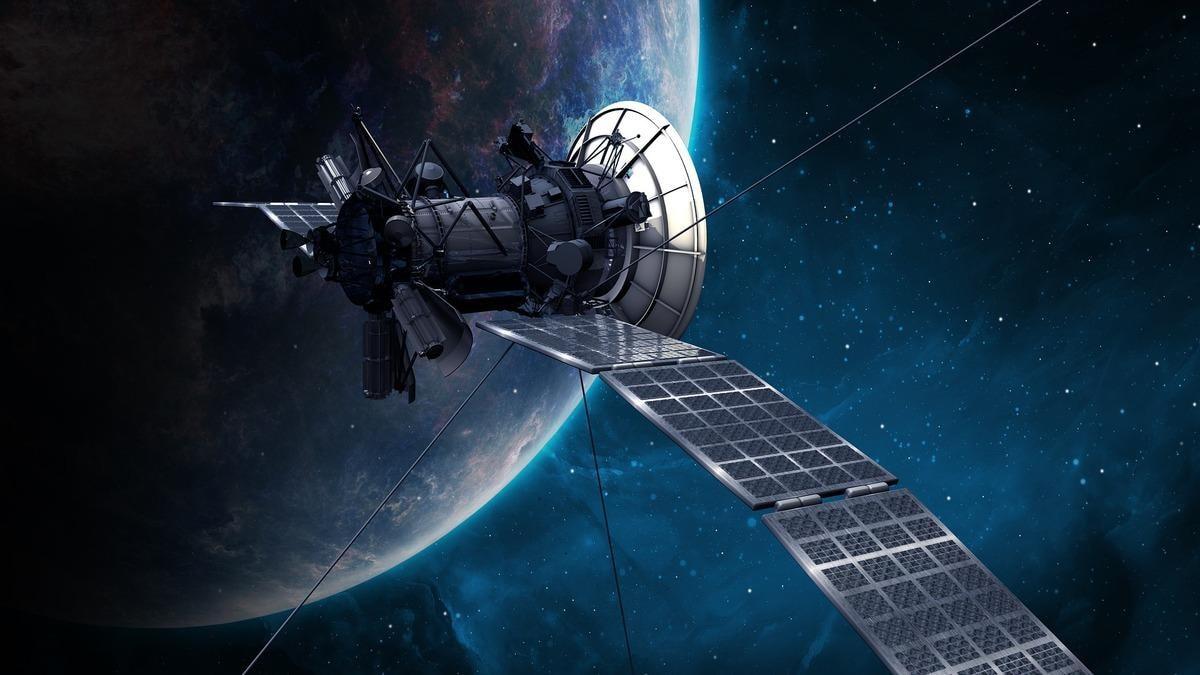The Rise of India’s Private Space Sector
- Thread starter Indx TechStyle
- Start date
More options
Who Replied?Swesh
Senior Member
- Joined
- Jan 12, 2020
- Messages
- 3,520
- Likes
- 12,179
Swesh
Senior Member
- Joined
- Jan 12, 2020
- Messages
- 3,520
- Likes
- 12,179
- Joined
- Apr 29, 2015
- Messages
- 18,277
- Likes
- 56,182
Was about to post it elsewhere.
Well, you think this thread should be sticky??
Swesh
Senior Member
- Joined
- Jan 12, 2020
- Messages
- 3,520
- Likes
- 12,179
Director, VSSC visited Space Startups at Bangalore
19 dec 2022
Dr. Unnikrishnan Nair, Director, VSSC visited the facilities of M/s. Bellatrix Aerospace Pvt. Ltd., incubated inside IISc Bangalore. He witnessed the electric propulsion based thruster firing trials and green propulsion testing in high altitude chambers at their facility.
Director, VSSC also visited the facilities of M/s. Digantara, a startup for space surveillance inside IISc Entrepreneurship Centre, Bangalore. Digantara team briefed him about the activities towards establishing a space-based surveillance platform for safeguarding future space operations. He had a discussion with the team on the status of data received from ROBI (ROBust Integrating proton fluence meter) which was flown in the PSLV's Orbital Experimental Platform (POEM) in the PSLV C53 mission on June 30, 2022.
19 dec 2022
Dr. Unnikrishnan Nair, Director, VSSC visited the facilities of M/s. Bellatrix Aerospace Pvt. Ltd., incubated inside IISc Bangalore. He witnessed the electric propulsion based thruster firing trials and green propulsion testing in high altitude chambers at their facility.
Director, VSSC also visited the facilities of M/s. Digantara, a startup for space surveillance inside IISc Entrepreneurship Centre, Bangalore. Digantara team briefed him about the activities towards establishing a space-based surveillance platform for safeguarding future space operations. He had a discussion with the team on the status of data received from ROBI (ROBust Integrating proton fluence meter) which was flown in the PSLV's Orbital Experimental Platform (POEM) in the PSLV C53 mission on June 30, 2022.
Swesh
Senior Member
- Joined
- Jan 12, 2020
- Messages
- 3,520
- Likes
- 12,179

Chennai-based MSME to set up unit at Aero Park
December 24, 2022 10:04 pm | Updated 10:04 pm IST - CHENNAI
ST Advanced Composites, Chennai-based MSME which made components for UAE’s First Lunar Mission – Rashid Rover will be developing a world class composite manufacturing facility.
“Discussion is going on with Chennai Aero Park, TIDCO regarding the space. We are looking at one acre space. We are going to develop a world class composite manufacturing facility in the Chennai Aero Park,” said Devendran Thirunavukarasu, Director of ST Advanced Composites Pvt Ltd (STAC).
“We are going to manufacture aerospace and defence parts, radome for radar system, defence antennas, satellite structural parts etc,” he said. The firm is looking at an investment of around ₹50 crore into this project.
Incorporated in 2014, the MSME operates out of a facility at Maduravoyal Chennai with a 21- member team headed by Devendran Thirunavukarasu, Founding Director and Tarini Murugesan, Director of STAC. At present, the firm makes Carbon Fiber Reinforced Plastic (CFRP) components for Aerospace and Defence industries. The firm is working with various projects with DRDO and ISRO.
@Varoon2 @Vamsi @Indx TechStyle
- Joined
- Apr 29, 2015
- Messages
- 18,277
- Likes
- 56,182
Skyroot on cover of India Today!

This may have been already been launched today, depending on the time zone 

 www.businesstoday.in
www.businesstoday.in

India’s spacetech start-up Digantara to welcome New Year with mapping testbed launch aboard Elon Musk’s rocket
The second launch by an Indian start-up on a reusable Falcon 9 rocket seeks to complement the placing of the company’s ROBI mission launched on the Indian space agency’s workhorse in the first half of 2022.
Digantara's satellite is launched onboard Space X's Transporter-6 mission
 theprint.in
theprint.in
Digantara launches second satellite to monitor space weather
Nagpur, Jan 3 (PTI) Space sector start-up Digantara on Tuesday launched its second satellite Pushan-Alpha as a rideshare onboard SpaceX’s Transporter-6 mission that soared to the low earth orbit from Cape Canaveral in Florida, US. The satellite will serve as a space weather testbed in the sun...
 theprint.in
theprint.in
SammyBoi111
Regular Member
- Joined
- Jan 27, 2023
- Messages
- 204
- Likes
- 1,749

Eyes on the stars': India's spacetech start-ups get ready for big takeoff
Indian spacetech start-ups: After reporting several successes in 2022, the Indian spacetech sector is looking at entering its next phase of growth
Some cool insights for India's space startup ecosystem....
Redirected from Twitter....
- Joined
- Oct 14, 2020
- Messages
- 27,425
- Likes
- 189,289
WarmongerLSK
Regular Member
- Joined
- May 30, 2022
- Messages
- 643
- Likes
- 2,331
jai jaganath
Senior Member
- Joined
- Jul 3, 2022
- Messages
- 5,367
- Likes
- 9,292
Folks what's the status of agnikul sub orbital launch
Yah, it was supposed to go up by the end of March.Folks what's the status of agnikul sub orbital launch
Swesh
Senior Member
- Joined
- Jan 12, 2020
- Messages
- 3,520
- Likes
- 12,179
Yah, it was supposed to go up by the end of March.
Swesh
Senior Member
- Joined
- Jan 12, 2020
- Messages
- 3,520
- Likes
- 12,179
Near at the end of vedio he mentioned hopefully next 30-45 days
Swesh
Senior Member
- Joined
- Jan 12, 2020
- Messages
- 3,520
- Likes
- 12,179

Skyroot Aerospace test-fires 3D-printed cryogenic engine for 2024 rocket
Naga Bharath Daka, COO and cofounder of Skyroot, said that the engine will enhance the payload capacity of the company’s Vikram lineup of rockets, which will be used to launch satellites into low-Earth orbits
Skyroot Aerospace test-fires 3D-printed cryogenic engine for 2024 rocket
2 min read . Updated: 04 Apr 2023, 08:33 PM IST
Shouvik Das
The new engine, Dhawan-II, is more powerful than its predecessor, offering 3.5 kilo-Newton (kN) of thrust — in comparison to the 1kN thrust that Dhawan-I can produce.
The new engine, Dhawan-II, is more powerful than its predecessor, offering 3.5 kilo-Newton (kN) of thrust — in comparison to the 1kN thrust that Dhawan-I can produce.
Naga Bharath Daka, COO and cofounder of Skyroot, said that the engine will enhance the payload capacity of the company’s Vikram lineup of rockets, which will be used to launch satellites into low-Earth orbits
Private homegrown space startup, Skyroot Aerospace, on Tuesday announced a successful test-firing of its second fully 3D-printed cryogenic engine, Dhawan-II, for a 200-second duration. This is the second cryogenic rocket that has been successfully test-fired by Skyroot, following the Dhawan-I engine that was tested in November 2021. The engine will feature in a future rendition of the company’s 3D-printed, privately built rockets, the company confirmed in a press statement.
Naga Bharath Daka, chief operating officer and cofounder of Skyroot, said that the engine will enhance the payload capacity of the company’s Vikram lineup of rockets, which will be used to launch satellites into low-Earth orbits.
The new engine, Dhawan-II, is more powerful than its predecessor, offering 3.5 kilo-Newton (kN) of thrust — in comparison to the 1kN thrust that Dhawan-I can produce. While the latter is tipped to be used in Skyroot’s Vikram-I rocket that is scheduled to launch later this year, Dhawan-II will power the company’s second-generation rocket, Vikram-II, which will succeed the Vikram-I.
On March 6, Pawan Kumar Chandana, chief executive of Skyroot, told Mint that the company is looking to conduct multiple commercial launches with Vikram-I, following the commencement of its launch services later this year. “The development of Vikram-II will continue simultaneously," the executive added.
Cryogenic engines are said to be better suited to power long-range and long-duration first stages of a rocket, which in turn can lead to increased range and trajectories of satellite launching rockets. This could be beneficial in giving rockets added versatility in terms of the range of distance that orbits that they can cover.
Skyroot said in a statement that its latest cryogenic engine, Dhawan-II, used two rocket propellants — liquid natural gas (LNG) and liquid oxygen (LOX) that are stored at temperatures of below -150 degrees Celsius. The used fuels are also environmentally friendlier when compared to solid semi-cryogenic rocket fuels, the company claimed.
| Thread starter | Similar threads | Forum | Replies | Date |
|---|---|---|---|---|
|
|
Passenger cars deliveries from China to Russia rise to $4.6 bln in January-June | Europe and Russia | 0 | |
|
|
Skycraper and Highrises in India | Economy & Infrastructure | 998 | |
|
|
Behind the rise of brits in BHARATVARSH | Knowledge Repository | 18 | |
|
|
China's industrial profits rise 28.2% y-o-y in October | China | 16 |
Latest Replies
-
Idiotic Musings From Firangistan
- The Juggernaut
-
Skycraper and Highrises in India
- Atavistic
-
Indian Special Forces
- NoobWannaLearn
-
-
Israel - Hamas Gaza Conflict Oct-2023
- TopWatcher
-
Jokes Thread
- Corvus Splendens
-
Russia Ukraine War 2022
- hurrians
-
Small arms and Light Weapons
- NoobWannaLearn
-
Chinese Private Space
- skywatcher
Global Defence
-
Small arms and Light Weapons
- NoobWannaLearn
-
Turkish defense industry news updates
- tfxkaanf23
-
F-35 Joint Strike Fighter
- blackjack
-
New Naval Technology
- Blademaster
-
World Military/Paramilitary/Special Forces
- Zoid Raptor
-
F-16 Viper
- MiG-29SMT
-
Sukhoi PAK FA
- StealthFlanker
-
Japan Self Defense Forces - Pictures & Videos
- Love Charger
New threads
-
Boston Dynamics showed flexible new robot Atlas
- Soldier355
- Replies: 1
-
An Indian Admiral and a pakistani Air Commodore
- Zoid Raptor
- Replies: 0
-
First Asian on the Moon will be a Japanese astronaut
- skywatcher
- Replies: 0
-
Iran Israel conflict
- patriots
- Replies: 43
Articles
-
India Strikes Back: Operation Snow Leopard - Part 1
- mist_consecutive
- Replies: 9
-
Aftermath Galwan : Who holds the fort ?
- mist_consecutive
- Replies: 33
-
The Terrible Cost of Presidential Racism(Nixon & Kissinger towards India).
- ezsasa
- Replies: 40
-
Modern BVR Air Combat - Part 2
- mist_consecutive
- Replies: 22
-
Civil & Military Bureaucracy and related discussions
- daya
- Replies: 32
